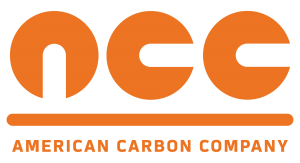A technique employed to control the corrosion of metal objects through an electrochemical cell. In this process, the metal to be protected is a cathode, while a more easily corroded material (be it graphite, high silicon cast iron, magnesium, or zinc) acts as the anode.
Impressed Current Cathodic Protection is used to protect larger structures. In these systems, the anode (typically graphite, high silicon cast iron, or mixed metal oxide) are connected to a DC power source, typically a rectifier is used as this power source to convert AC to DC current for the system. The system is designed for a specific life and the DC output of the rectifier must be monitored on a regular basis to ensure the system is functioning as designed.
Galvanic, or sacrificial, Cathodic Protection is used in situations where a smaller or mobile structures (boats) are being protected. Metals such as zinc and magnesium are used for these types of systems because of their naturally high electrochemical potential, current capacity and consumption rate. No additional power source is required to operate a galvanic system as the higher natural electrochemical potential of the anode material being used automatically causes the structure intended to be protected to act as a cathode in the system (this is of course conditioned upon the correct number of galvanic anodes being installed).
Though there are many signs that as early as 27 BC, civilization understood some basic principals of the electrochemical process and corrosion, it wasn’t until 1824 when Sir Humprey Davy, a British chemist (1778-1829), was given authority to install zinc and cast iron plates on to the hulls of British warships that the actual science of Cathodic Protection as we know it today came in to practice.
Of all the materials that American Carbon sells, magnesium is by far the most volatile when it comes to pricing. Right now, over 80% of the raw magnesium in the world comes from dolemite mined in China where the oxide is reduced using ferrosilicon. On the supply side, the price of ferrosilicon is the greatest determinant of the price of magnesium. As the price of ferrosilicon increases, the price of magnesium also increases. Another production factor is the amount of magnesium that is currently being produced. Only the purest magnesium can be used for galvanic anodes, so scarcity of high quality magnesium also becomes a price constraint. On the demand side, the largest use of magnesium is for alloying with aluminum and for light weight die cast parts. More and more the auto industry is utilizing magnesium and magnesium alloys for die cast parts because of its high strength properties and light weight. It is the third most used structural metal in the world, behind steel and aluminum. Magnesium anodes account for less than 3% of the total annual world usage of magnesium. American Carbon strives to keep its finger on the magnesium market pulse and frequently visits magnesium smelters to best understand the current market conditions. To learn more about the interesting process of how magnesium is made, please Contact Us for more information.
American Carbon sells synthetic graphite. Synthetic graphite is made with a combination of petroleum coke and coal tar pitch. Through a number of pressurized heating processes, a molded or extruded block or round is made. A more detailed description of the manufacturing process can be found here. Most specialty graphite offered by American Carbon is also machined to match customer tolerances. Please contact us to learn more about synthetic graphite.
